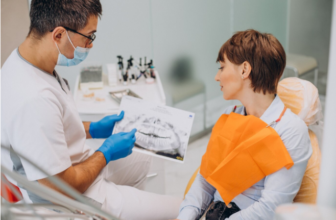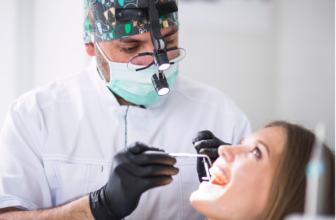Cervical Cancer Screening Comprehensive Guide
What is Cervical Cancer Screening?
Cervical cancer screening is a medical test designed to detect abnormal cells in the cervix, which could potentially develop into cervical cancer. The goal is to identify any early changes in cervical cells so that they can be treated before cancer develops. There are two main types of cervical cancer screening tests: the Pap test (Pap smear) and the HPV (Human Papillomavirus) test.
Types of Cervical Cancer Screening
- Pap Test (Pap Smear): This test involves collecting cells from the cervix to look for abnormalities that could indicate precancerous or cancerous changes. It’s recommended for women aged 21 and older.
- HPV Test: This test detects the presence of high-risk strains of HPV, a virus that can cause cervical cancer. It’s often done alongside the Pap test (co-testing) for women aged 30 and older, but can be done alone as well.
Why Get a Cervical Cancer Screening?
- Early detection: Cervical cancer screening allows for the identification of precancerous changes before they develop into cervical cancer, leading to early intervention and better outcomes.
- Risk of cervical cancer: The main cause of cervical cancer is infection with high-risk types of HPV. Regular screening helps in the early detection of these infections.
- Prevention: Early treatment of abnormal cervical cells can prevent cervical cancer.
Health Symptoms and Reasons to Get Cervical Cancer Screening
- No symptoms: Cervical cancer in its early stages typically does not cause symptoms, which is why regular screening is so important.
- Irregular bleeding: Unexplained bleeding between periods, after intercourse, or after menopause may warrant screening.
- Pelvic pain or abnormal discharge: These symptoms can also be associated with cervical abnormalities.
- HPV infection: Women with a history of HPV or who are at risk for HPV should be screened regularly.
Health Professionals Who Perform Cervical Cancer Screenings
- Gynecologists: Specialize in women’s reproductive health and are the primary doctors who perform Pap smears and HPV tests.
- Primary Care Physicians: In some cases, family doctors or internal medicine doctors can also perform cervical cancer screenings during routine checkups.
- Nurse Practitioners and Physician Assistants: In certain clinical settings, nurse practitioners or physician assistants can also conduct these screenings.
Cervical Cancer Screening Process
- Pap Test: During a pelvic exam, a speculum is inserted into the vagina to open it. A small brush or spatula is used to collect cells from the cervix, which are then sent to a lab for analysis.
- HPV Test: Similar to the Pap test, this test involves collecting cells from the cervix. The cells are then tested for high-risk strains of HPV.
- Duration: The entire screening process usually takes about 5-10 minutes.
How to Prepare for Cervical Cancer Screening
- Avoid sexual intercourse, douching, and using vaginal medicines or spermicides for 48 hours before the test, as these can wash away or hide abnormal cells.
- Schedule the screening for a time when you’re not menstruating, as this can affect the results.
- Wear comfortable clothing that’s easy to change in and out of, as you’ll need to undress from the waist down for the exam.
How Often Should Cervical Cancer Screening Be Taken?
- Ages 21-29: Women should have a Pap test every 3 years.
- Ages 30-65: Women should have a Pap test combined with an HPV test every 5 years (co-testing) or a Pap test alone every 3 years.
- Ages 65+: Screening may no longer be necessary if you’ve had regular screenings with normal results for the past 10 years, but consult your doctor for personal recommendations.
What’s the Next Step After Cervical Cancer Screening?
- Normal results: If your results are normal, you can continue regular screenings based on your age and risk factors.
- Abnormal results: If abnormal cells are found, your doctor may recommend further testing, such as a colposcopy (an exam to closely inspect the cervix) or a biopsy to determine if the cells are precancerous or cancerous.
Risks of Cervical Cancer Screening
- False positives: Abnormal results don’t always mean cancer, which can lead to unnecessary anxiety and further testing.
- Discomfort during the exam: Some women may experience mild discomfort during the Pap smear, particularly when the speculum is inserted.
- False negatives: In some cases, abnormal cells may be missed, although regular screening significantly reduces this risk.
Cervical Cancer Screening Alternatives
- Self-sampling for HPV: Some programs allow women to collect their own sample for HPV testing at home. This option may become more widely available in the future.
- Vaginal cytology: This test is sometimes used for women who have had a hysterectomy. It involves collecting cells from the vaginal walls rather than the cervix.
Questions About Cervical Cancer Screening
- At what age should I start getting cervical cancer screenings? Screening is recommended starting at age 21 for all women, regardless of sexual activity.
- How often should I get screened? Women aged 21-29 should get a Pap smear every 3 years, while women aged 30-65 can opt for a Pap smear every 3 years or co-testing (Pap and HPV) every 5 years.
- Do I need to be screened if I’ve had the HPV vaccine? Yes. The HPV vaccine doesn’t protect against all types of HPV, so regular screening is still necessary.
- What happens if my Pap test shows abnormal results? If your Pap test is abnormal, your doctor may recommend further testing, such as a colposcopy or biopsy, to determine if precancerous or cancerous cells are present.
- Is cervical cancer screening painful? The screening can cause some discomfort, especially when the speculum is inserted, but it should not be painful.
- Can I have a Pap smear if I’m pregnant? Yes, Pap smears can be done safely during pregnancy, typically during the first trimester.
- What does a positive HPV test mean? A positive HPV test means that you have a high-risk strain of HPV. It does not mean you have cancer, but it increases your risk for developing cervical cancer in the future.
- How should I prepare for the test? Avoid intercourse, douching, and using vaginal products for 48 hours before the test. Schedule your screening for when you’re not menstruating.
- Can cervical cancer be detected early? Yes. Regular Pap smears and HPV tests can detect changes in cervical cells early, allowing for timely treatment and prevention of cancer development.
- How long does it take to get results? Results from a Pap smear or HPV test typically take 1-3 weeks.
The Hosst.com Platform uses a Digital Twin to help users manage their health by tracking, organising, and optimising healthcare activities. It provides personalised insights and assists with scheduling checkups, tests, and doctor visits.
Key features include:
- Symptom management: Recommends tests and treatments based on user input.
- Health data tracking: Monitors glucose, blood pressure, and more from health devices or manual inputs. Connects with your favorite apps and health monitors.
- Alerts: Warns of abnormal health signs and suggests corrective actions.
- Lifestyle recommendations: Offers diet, medication, and lifestyle tips based on health trends.
- Test result interpretation: Simplifies complex results and explains what they mean for the user.
- Preventive care: Sends reminders for checkups and suggests actions to prevent illness.
- Health scenario simulations: Predicts potential health outcomes based on current data.
- Product and service finder: Helps users find the right healthcare product or service.
- Doctor visit preparation: Gathers vitals, history, insurance, and questions for productive visits, with easy sharing to doctors.
- User-friendly: Ask in your own words, available on tablets, desktops, and mobile devices.
The platform simplifies health management and improves well-being. Free and easy to use and no installation required, get started today.
Disclaimer: The information provided in these articles is for informational purposes only and is not a substitute for professional medical advice, diagnosis, or treatment. Always consult with a qualified healthcare professional before making any decisions about your health or starting any treatments.
Photo credits Freepik.com






